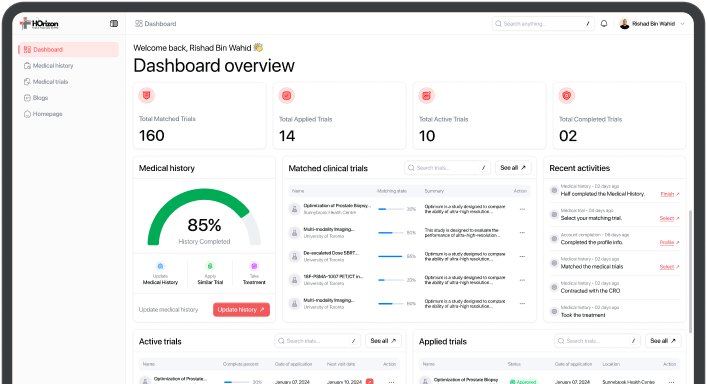The Impact of Physical Exercise on Sleep in Colorectal Cancer Patients During Prehabilitation Period
Contact information
Sarah Atoui, MSc
McGill University Health Centre
Montreal, Quebec, Canada, H3G 1A4
Basic information
N/A
N/A Age
100 Enrollment
Trial Details
Brief Summary
Main objective: To evaluate the bidirectional relationships between physical exercise and sleep parameters, as a part of multimodal prehabilitation intervention, on pre- and postoperative outcomes in surgical patients with colorectal cancer, in an RCT. Secondary objective: to determine whether the levels of anxiety and depression affect these relationships. Objectives are based on the overarching hypothesis that is sleep and physical activity influence each other through complex, reciprocal interactions including multiple physiological and psychological pathways. To achieve this, providing a multimodal prehabilitation, specifically physical exercise, involved in mental and physical health through different mechanisms, i.e., improving physical functioning and fitness, reducing side effects of cancer treatments, preventing bone loss and weight gain, improving the quality of life and sleep, decreasing symptoms of fatigue and depression. The present is a pilot study aiming to evaluate the bidirectional relationships between sleep and physical exercise, and the preliminary outcome has important implications for informing both clinical and public health practice. Research question: Does a multimodal intervention including physical exercise improve sleep quality and duration compared to standard of care, during the perioperative period? Conversely, does a better sleep quality and duration increases the level of physical exercise during the perioperative period? How the level of anxiety and depression will affect these relationships? If the Prehabilitation program specifically physical exercise will positively affect sleep quality and duration after surgery, in the way to be a protective factor of sleep to not be reduced by up to 55% compared to those receiving standard of care?
Official Title
The Impact of Physical Exercise on Sleep Quality and Duration in Colorectal Cancer Patients During Prehabilitation Period: A Pilot Study
Selection Criteria
Eligibility Inclusion Criteria
-
All adult persons scheduled for resection of malignant colorectal lesions will be included
Eligibility Exclusion Criteria
-
- A compromised health status (American Society of Anesthesiologists [ASA] class 4-5) or comorbid medical conditions interfering with the ability to perform an exercise.
- Patients are unable to understand the information given, insufficient understanding of English or French language to provide informed consent or who are considered unable to perform study-specific procedures.
- Patients that diagnosis of a sleep disorder other than insomnia (e.g., sleep-disordered breathing) or received psychotherapy specifically for insomnia, as well as a night-shift worker in the past 3 months or the next 18 months will be excluded
